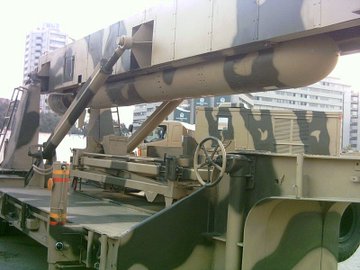.,.,.,
Pakistan’s Journey to Strategic Stability
15th September 2023
Dr. Shahid Hameed
South Asia is a unique case of amity and enmity. Unsettled geographic issues, ideological differences, and a paradox of history have defined the region’s strategic chessboard. For the past 76 years, the foundations of strategic culture in South Asia have remained unchanged. However, the evolution in geo-political and geo-strategic realities has introduced new dimensions for military strategists to develop alternative counterforce options aligned with this updated strategic canvas.
Throughout the ages, Pakistan’s journey to strategic stability in South Asia has been full of traditional and non-traditional security threats. At the same time, the Jammu and Kashmir dispute remained a constant factor and served as an independent variable while defining strategic stability approaches.
By and large, we may categorize Pakistan’s strategic journey into three portions. First, the pre-nuclearization phase in which the characteristics of Pakistan’s strategic stability parameters were formal, and the response to the regional imbalance was mainly based upon the alliance support formula. The decision was dictated by domestic as well as external variables as no other viable option was available with Pakistan to balance India’s power in the region.
However, the strategic imbalance resulted in three wars between both countries and Pakistan faced a huge territorial loss in 1971. This strategic phase came to an end in 1998 with the nuclearization of South Asia. The second phase was the nuclear strategic stability period. During the period, the order and prioritization of Pakistan’s strategic stability conception changed and a sense of new self-realization and national identity paved new paths for a deterrence approach.
The dependence on Western support for balancing was immediately replaced with the idea of nuclear self-imaging and minimum credible nuclear deterrence became a central part of the regional power balance debate. Indeed the nuclearization of South Asia was also an incredible addition to the regional and international nuclear discourse. The nuclear capabilities enabled Pakistan to reframe its traditional prism to think about the regional balance of power.
The advent of nuclearization in South Asia was initially perceived as an absolute form of regional balance of power and a source of peace.
However, a new challenge emerged as the sensitivity of the Jammu & Kashmir issue and deep-rooted ideological differences again breached this conception. Although, the threshold was never crossed by either Pakistan or India, the small-scale warfare and aerial combats under the nuclear umbrella proved that the journey to strategic stability had shifted to a new era. In the meantime, nuclearization became a new normal in the South Asian story of strategic evolution.
The alternative approaches and military doctrines framed the foundation for the trajectory in strategic calculus, particularly after low-intensity experience of conflicts. India realized that the Cold Start doctrine and nuclear deterrence were not viable options in low-intensity warfare.
At the same time, the global power contestation provided New Delhi a valuable space to pitch its hegemonic existence in the region, that resulted in the invention and adaptation of alternative approaches including small-scale border intrusions, so-called surgical strikes, covered secret operations, technology advancements, capability and response gauging tactics, disinformation, and the hybrid warfare. This phase of Asian contestation based upon traditional and non-traditional postures can be termed as the ‘post-nuclear hybrid strategic stability era’.
On the non-traditional side, India’s alternative approaches include soft warfare through social media platforms, investing in misleading influencers through hidden and indirect sources, promoting anti-establishment thoughts, and sponsoring and producing academic and non-academic hatred literature against Pakistan.
The changing nature of this strategic evolution and India’s adaptation of alternative military approaches in terms of traditional and nuclear maneuverings demand a systematic study.
There are four exclusive domains that require immediate securitization to gauge this very phase of the ‘post-nuclear hybrid strategic stability era’.
First, to rationally analyze the direction of global power contestation and possible solutions to alignment of Pakistan’s foreign policy behavior.
Second, the military and technological advancements opted by New Delhi.
The third is the counter-strategies and measures to address India’s alternative approaches .
Finally, to re-establish a strategic balance based upon the ‘credible nuclear deterrence’ idea.
South Asia is a unique case of amity and enmity. Unsettled geographic issues, ideological differences, and a paradox of history have defined the region’s strategic chessboard. For the past 76 years, the foundations of strategic culture in South Asia have remained unchanged. However, the...

strafasia.com
























